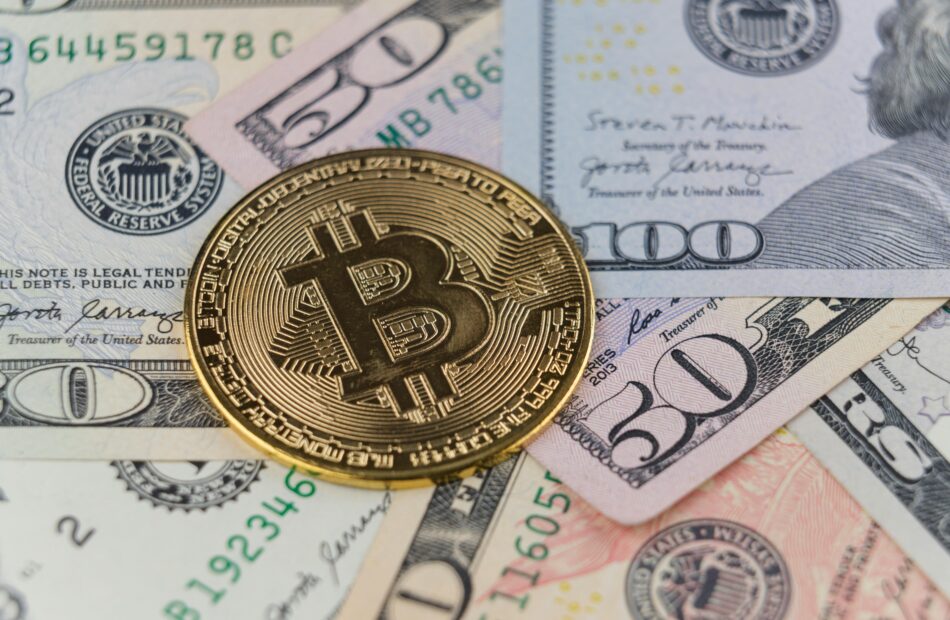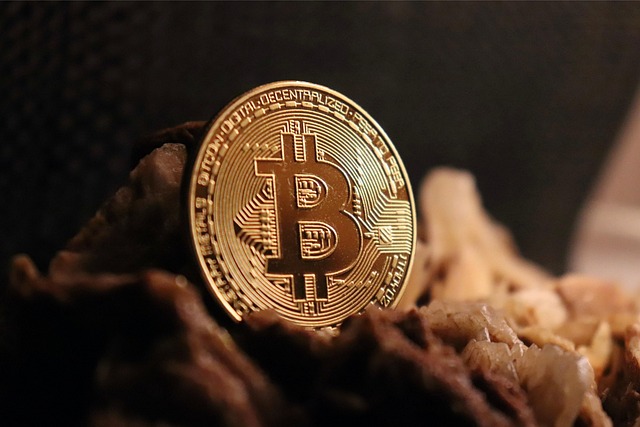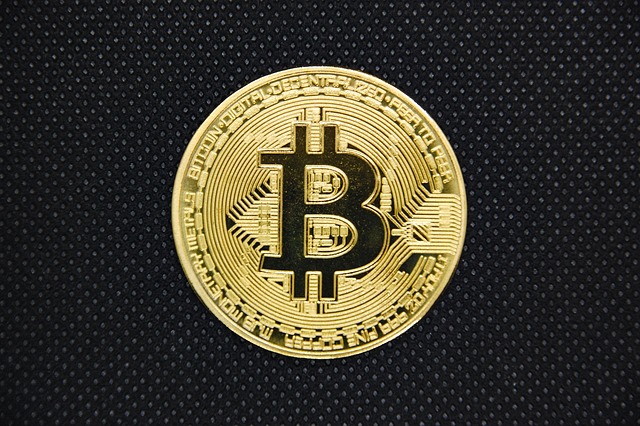If Trump fired Powell, what would happen to crypto?
Recent months have seen the ebb and flow of a certain pattern: US President Donald Trump will take some objectively harmful action to the US economy, and the markets will crash. Seeing this, Trump has turned to Jerome Powell, chair of the Federal Reserve, and now demands he lower the Fed Funds Rate — the rate at which the Fed lends money to banks. And the steely eyed Powell will say “No.”Trump wants to lower rates because doing so is an effective cash injection into the United States economy, stimulating activity and lifting the market. This, he believes, will make him appear successful. Powell wants to follow rigorous economic standards to set rates to carefully balance the Fed’s dual mandates of maximizing employment and maintaining stable prices. He also wants to maintain the Fed’s independence from political pressure and, crucially, maintain the Fed’s appearance of independence from political pressure. If the markets believe that the central bank’s independence has failed in the US, it may become more difficult to sell US Treasury Bills, the United States’ sovereign debt. That is a problem in the fundamental sense that the US will have to pay more to borrow money, making it poorer — but it is an especially acute problem now because the US already has an enormous, $30-trillion pile of debt which it has to periodically refinance.If it is forced to refinance at higher rates because markets do not trust the US government anymore, then an ever greater percentage of GDP will be absorbed by the cost of interest, and, as the kids say, the United States will be cooked. That dance takes us to now. Last week, Trump repeatedly intimated that he would like to fire Powell, and the market didn’t like it. On Monday, Trump provoked a crash by calling Powell a “major loser” on Truth Social. In response, Treasury Secretary Scott Bessent has reportedly voiced concerns with the risks of firing Powell to Trump, who seems, for now, to have acquiesced, stating Tuesday that he would not fire his Fed chair. Trump and Powell in 2017. Source: TrouwStill, this process feels more like a spiral than anything else, and many market watchers are waiting for the next shoe to drop. That forces the question: if Trump does go through with his base instincts and axes Powell, what will be the result? In particular, what effect will this have on the cryptocurrency industry?Cracking the FedIt bears mentioning that the President is not supposed to be able to fire the Fed chair at will. Section 10 of the Federal Reserve Act of 1913 states that “each member shall hold office for a term of fourteen years from the expiration of the term of his predecessor, unless sooner removed for cause by the President.”This language may appear ambiguous, but in the 1935 case Humphrey’s Executor v. United States, the Supreme Court ruled that the Constitution does not give the President an “illimitable power of removal” and so the President’s removal power is limited by statutory language. This decision ratified the concept of “independent agencies,” which reside within the executive branch, but have independent authority. While a number of agencies have this characteristic, including the SEC, the CFTC, and the FTC, the Fed is the most important. Related: US gov’t actions give clue about upcoming crypto regulationEconomists do not think much about the political control of central banks. Politicians have relatively short-term incentives, thinking in years or election cycles. This inherently pushes them to prefer short-termist policies, of which hot cash injections are the purest form. However, fiscal and monetary policy are delicate arts that often animate painful policy choices. In a classic example, Richard Nixon pressured then-Fed chair Arthur Burns to pursue expansionary monetary policy in the lead up to the 1972 election, believing that it would help his reelection odds. Nixon won that election in a landslide, but soon followed catastrophic “stagflation” that crippled the United States economy for a decade, and indeed may still be felt in the industries which hollowed out during that period. Contrast this with the policies of Paul Volcker, who, after this devastating period of stagflation, implemented a vicious series of rate increases between 1979 and 1987, which caused the “Volcker Shocks”, a series of painful recessions. However, the effect of this policy was to eventually strangle inflation and herald in the boom times of the 90s, facilitating Bill Clinton’s remarkable fiscal policy. No politician could have made these choices, none will in the future, and that is the rub. Economists — and, crucially, markets — believe deeply that the Fed must remain independent or else the entire economic fabric of American society risks collapse. This is no hyperbole — nations with politically controlled central banks like Weimar Germany, Peronist Argentina and Venezuela have experienced such crippling hyperinflation that it led variously to multigenerational geopolitical backsliding, reports of citizens starving and eating rats, and the rise of Adolph Hitler. This is serious stuff.To fire Powell, Trump will first have to defeat the Humphrey’s Executor precedent, a prospect that many legal scholars believe likely in light of the current Supreme Court composition. This is a Rubicon which, once crossed, marks a point of no return. Not just Trump, but every President who follows will have plenary legal authority to direct all executive officers — Fed Chair included — at their will. Most believe this will lead to ruin. But disaster or no, it will be a test for cryptocurrency. The original Bitcoin White Paper aimed to disintermediate financial transactions from “financial institutions serving as trusted third parties.” If the Fed falls, and US monetary policy is unmoored from sound judgment, the thesis of cryptocurrency’s early years will be put in stark relief. As Trump has provoked capital flight in recent weeks, investors have sought safety in various assets. Traditionally, any time there was a crisis, sophisticated parties fled risk assets into US Treasurys. The thinking was that these were riskless assets. Well, those days may be done. Ten year bond yields approached 5% during the peak of the Tariff Crisis and have not yet fully returned to previous lows. If Trump breaks the Fed, these outflows will be a drop in a bucket in a river, and that money may move into cryptocurrencies. Trump admonishes Powell, referred to here as “Mr. Too Late.” Source: TrumpHistorically, the price of Bitcoin has tightly tracked the Nasdaq (albeit with a multiplier). However, since the Tariff Crisis, while US securities prices have remained largely depressed, Bitcoin has miraculously begun to pump. This has led some to speculate that we are witnessing the long-prophesied “decoupling”, wherein crypto-assets will fulfill their original purpose and move independently from centralized assets. It is impossible to say if this will or will not happen, but if Trump gives Powell the boot, we will find out for sure. Out of the frying pan, and into the fire Of course, world-historical collapse can’t be all good for crypto, and there will be significant pain across a variety of surfaces from this crisis as well. In the first instance, stablecoins will feel dire consequences almost immediately. In the last decade, two USD-denominated stablecoins — USDC and USDT — have dominated the market. Their issuers, Circle and Tether, are both important systemic institutions and major buyers of US Treasurys, which collateralize the majority of their stablecoin obligations. An immediate result of a Fed Crisis could be a Treasury default. The economist Noah Smith has speculated that Trump might try to write down the US’s sovereign debt:“I suspect Trump will do something more like what he used to do as a businessman when his debt went bad — look for a cheap bailout, and if one doesn’t emerge, declare bankruptcy.”Indeed, the President has hinted darkly at this prospect himself, in February suggesting that they might rely on pretense to mark the bills down:”There could be a problem – you’ve been reading about that, with Treasuries and that could be an interesting problem…It could be that a lot of those things don’t count. In other words, that some of that stuff that we’re finding is very fraudulent, therefore maybe we have less debt than we thought.”Related: Atkins becomes next SEC chair: What’s next for the crypto industryA sovereign default would immediately affect Circle and Tether by marking down the value of their collateral. This, in turn, could leave the stablecoins undercollateralized, which might provoke a bank run. The markets may ultimately stabilize, but events could easily turn the other way, leading to collapse of major stablecoins. This in turn would have numerous second-order effects, as smart contracts holding stables as collateral began liquidating positions, and contagion swept the rest of the market. Interestingly, these mechanical consequences may be less dire than the political costs of a Fed Crisis, because treasuries are not the only asset that has systemic importance to crypto. The US dollar has been the world’s reserve currency for many, many years. There are lots of good reasons for this; it is relatively strong and stable, so it is good to settle trade with. But if the government backing it ceases to be strong and stable, this paradigm will likely shift. And as more trade is executed in euro or yuan-denominated accounts, regulators in the EU and China will, in turn, have much more control of the flows of fiat currency through cryptocurrency. One prominent cryptocurrency attorney, who chose not to be named for fear of political reprisal, speculated exactly this:“I think China will fill a lot of the void and EU will fill most of the rest. Neither would be good for crypto generally between CCP and EU over-regulating in different ways for different goals. This seems bad.”This might prompt flight to uncollateralized crypto-primitive assets, but there is essentially no precedent for such assets being used at scale for real-world transactions. It is just as likely that a stablecoin crisis could simply kneecap the industry for years as it is catching its stride.Ultimately, nobody knows whether Trump will fire Powell, or even if he can. Nobody knows what consequences might flow downstream from his decisions. But if a butterfly flapping its wings in Argentina can cause a tornado in Prague, then Donald Trump muttering incantations in the West Wing might vindicate or destabilize the blockchain forever.Like it or not, we’re all along for the ride. Magazine: UK’s Orwellian AI murder prediction system, will AI take your job? AI Eye
Swiss National Bank chief dismisses Bitcoin reserve calls
An official of the Swiss National Bank dismissed calls for the institution to add Bitcoin to its reserves as a hedge against the ongoing macroeconomic turmoil.According to an April 25 Reuters report, Swiss National Bank Chairman Martin Schlegel said that “cryptocurrency cannot currently fulfil the requirements for our currency reserves” during a shareholder meeting in Bern earlier today. The comments come amid mounting pressure from the local crypto industry to add Bitcoin (BTC) to the central bank’s reserves.Campaigner Luzius Meisser, a board member of cryptocurrency broker Bitcoin Suisse, told Reuters that “holding bitcoin makes more sense as the world shifts towards a multipolar order.” He claimed that the need is even more dire now that “the dollar and the euro are weakening.”This is not the first time Schlegel has pushed back against the idea. Reports from early March quoted Schlegel saying that he doesn’t want to make Bitcoin a reserve asset in Switzerland, citing a lack of stability, liquidity concerns and security risks.Related: Swiss canton of Bern votes to study Bitcoin mining feasibilitySwitzerland’s campaign for a Bitcoin reserveOn the last day of 2024, the Swiss Federal Chancellery initiated a proposal to constitutionally mandate the Swiss National Bank to hold Bitcoin on its balance sheet. The proposal needs to gather 100,000 signatures to trigger a referendum in Switzerland.Signature collection document. Source: InitiativeBTC.chThe initiative requests to change the third paragraph of Article 99 of the constitution. The relevant text currently states:“The Swiss National Bank shall create sufficient currency reserves from its revenues; part of these reserves shall be held in gold.”If successful, the campaign would result in adding “and in Bitcoin.” to the end of the paragraph. The initiative saw the participation of the Swiss Bitcoin nonprofit think tank 2B4CH, which was responsible for preparing and submitting the documents. 2B4CH had some ties to industry heavyweights, with Giw Zanganeh, vice president of energy and mining at leading stablecoin issuer Tether, helping launch the campaign.Related: Crypto bank Sygnum hits unicorn status with new $58M raiseThe campaign is still ongoingMeisser claims that holding Bitcoin would free the central bank from the political influence of its foreign currency holdings, most of which are in US dollars and euros. According to him, “politicians eventually give in to the temptation of printing money to fund their plans, but bitcoin is a currency that cannot be inflated through deficit spending.” 2B4CH founder and chairman Yves Bennaïm told Reuters:“We are not saying — go all in with bitcoin, but if you have nearly 1 trillion francs in reserves, like the SNB does, then it makes sense to have 1–2% of that in an asset that is increasing in value, becoming more secure, and that everyone wants to own.”Switzerland is a hub for blockchain enterprises, with its “Crypto Valley” in the town of Zug being the location where Ethereum was founded. The nation continues to generate crypto initiatives, with global grocery giant Spar rolling out Bitcoin-based payments in a Swiss city earlier this month.The crypto Valley surpassed the $593 billion valuation mark, showcasing the growth trajectory of the region’s blockchain industry in 2024. Last year, the area saw the emergence of 17 crypto startup unicorns.Magazine: Crypto Valley and the Crypto Oasis: Ralf Glabischnig
Atkins SEC era sparks massive industry optimism, crypto execs speak out
The crypto industry is bracing for a significant shift in regulatory tone following Paul Atkins’ swearing-in as chair of the US Securities and Exchange Commission on April 21. A former SEC commissioner with deep roots in deregulatory philosophy, Atkins replaces Gary Gensler, whose combative stance toward crypto defined much of the agency’s recent legacy.In the latest episode of Byte-Sized Insight with Cointelegraph, key industry figures weigh in on the implications of this leadership change and what it might unlock for innovation, investment and clarity for digital assets.Crypto’s “golden age” continuesChris Perkins, president of CoinFund, spoke with host Savannah Fortis and described his excitement regarding the new SEC chair, predicting a reduction in regulatory uncertainty under the new administration. “We were under this regulatory reign of terror, you know, under the Biden administration,” said Perkins. “Investors in assets, they’re very comfortable taking market risk… but they’re not comfortable taking reputational risk, and along with that is regulatory risk.”He pointed out how it was not only investors and companies who were nervous under the last administration, but also developers in the crypto space who had been targeted for their work.Perkins highlighted how a shift in the regulatory climate could catalyze growth.“Now, again, you’re taking that personal liability off… So in a way, you have this perfect storm of new institutional capital coming in and new developers coming in. And I think the this is going to be a golden age for venture and value creation.”Related: Paul Atkins’ loosely linked RSR token rises 13% after Coinbase listingKatherine Dowling, general counsel and chief commercial officer at Bitwise Asset Management, agreed that change is already visible. “The mood has already changed,” she said. “We’ve seen a flurry of activity around certain legal cases… being dismissed, dropped… not because all regulation is going away… but because more work needs to be done to define what these digital assets are.”Dowling emphasized that the shift is about clarity, not deregulation. “It’s a signal shift towards let’s take a step back and define what these are, what they look like, and how they should be regulated.”What to expect from the Atkins eraJames Gernetzke, chief financial officer of Bitcoin and crypto wallet Exodus, added that “the promise of being able to engage with a regulator on a reasonable basis… is going to be very helpful.” Gernetzke said he expects a return to “more normal time frames” for IPOs and access to capital markets. “I think the IPO rush… you will see probably towards the end… maybe months 10, 11, 12… it’s coming for sure.”Perkins captured the broader sentiment, calling the incoming market structure bill a potential unlock. “This market structure bill is going to have a really big impact… because then I know what my asset is, and I have a process for capital formation. I have a process for disclosures… It’s going to be awesome.”Listen to the full episode of Byte-Sized Insight for the complete interview on Cointelegraph’s Podcasts page, Apple Podcasts or Spotify. And don’t forget to check out Cointelegraph’s full lineup of other shows! Magazine: SEC’s U-turn on crypto leaves key questions unanswered
SUI's 73% weekly price gains top crypto market — New price record in reach?
Key takeaways: SUI is up 23% in the past 24 hours and 73% weekly, outperforming top-cap cryptocurrencies.The launch of the Grayscale SUI Trust and the xPortal/xMoney Mastercard partnership boosted investor confidence.SUI’s TVL is up 40%, and daily DEX volumes surge by 177%, signaling strong ecosystem trust and utility.Sui (SUI) price was up 23% in one day, to trade at $3.67 on April 25. This is part of a prevailing rebound that began on April 21 and has seen Sui rise more than 73% over the last seven days.Data from Cointelegraph Markets Pro and TradingView shows SUI rose from a low of $2.11 on April 21, climbing as much as 77% to an intraday high of $3.71 on April 25.SUI/USD daily chart. Source: Cointelegraph/TradingViewSUI’s performance over the last seven days made it the biggest gainer among the top 100 cryptocurrencies by market cap.Top gainers April 25. Source: CoinMarketCapSUI price buoyed by positive fundamentalsSUI’s gains are primarily fueled by increasing investor confidence following the Grayscale SUI Trust launch and SUI’s strategic partnership with xPortal and xMoney to issue a virtual Mastercard across Europe.“SUI’s officially out of stealth mode,” said pseudonymous analyst Kyledoops in an April 24 post on X.“Grayscale just launched a trust, social chatter is exploding, and it’s [SUI] now sitting above AVAX and LINK in market cap,” Kyledoops expressed, adding:“This isn’t just retail hype—Wall Street is stepping into the SUI zone. Momentum feels different this time. It’s real. And it’s accelerating.”On April 23, Grayscale launched the Grayscale SUI Trust, which enables investors to gain exposure to SUI. The trust is now open to all eligible accredited investors.Source: GrayscaleAdding to the tailwinds is SUI’s latest partnership with xPortal and xMone, which introduced a virtual Mastercard, enabling 2.5 million European users to spend the token at over 20,000 merchants via Apple Pay and Google Pay.Source: Sui NetworkSui’s growing DeFi ecosystemSui remains among the top 10 layer-1 blockchains, with over $1.65 billion in total value locked (TVL) on the network. The chart below shows that the SUI’s TVL has increased about 40% over the last seven days.Sui network: TVL and daily DEX volumes. Source: DefiLlamaCompared to other top-layer networks, SUI is well ahead of its rivals in terms of TVL gains on the daily, weekly and monthly time frames, as shown in the chart below.Comparison of TVL performance on top layer-1 blockchains. Source: DefiLlamaSUI’s daily DEX volumes have risen by more than 177% over the last week, to $599 million. This is significantly higher than the 68% and 67% increases on BNB Chain and Solana, respectively. Related: Price predictions 4/23: BTC, ETH, XRP, BNB, SOL, DOGE, ADA, LINK, AVAX, SUIAlthough Ethereum remains the undisputed leader at $10.6 billion, this has declined by more than 14% over the last seven days.Are new all-time highs coming for SUI?From a technical perspective, SUI price gained momentum after breaking out of a falling wedge pattern, as shown on the daily chart below.After breaching a multimonth resistance trendline near $2.20, SUI reached the wedge’s technical target at $3.30. Bulls are now focused on all-time highs of $5.35, reached on Jan. 6.SUI/USD daily chart. Source: Cointelegraph/TradingViewThe relative strength index (RSI) has increased from 45 to 78 since April 20, reinforcing the strength of the bullish momentum.However, to sustain the ongoing recovery, SUI price has to first overcome the resistance between $4.50 and $5.10, before going into price discovery.Based on Elliott Wave analysis of the weekly chart, pseudonymous analyst Bitcoinsensus set a “massive” price target of $11.50 for SUI.Source: BitcoinsensusThis article does not contain investment advice or recommendations. Every investment and trading move involves risk, and readers should conduct their own research when making a decision.
‘Vitalik: An Ethereum Story’ is less about crypto and more about being human
When Zach Ingrasci and Chris Temple had the idea to make the documentary film Vitalik: An Ethereum Story, they were actually filming another documentary, and over the course of their filmmaking journey, they ended up capturing both a deeper, human look at the world of crypto and an end product that serves as a use case for the future of crypto filmmaking.When crafting a documentary, filmmakers will typically start with a vision of what they’d like to explore, a vision often saddled with a set of assumptions, only to shatter that vision once filming begins, creating an entirely new direction for the project.It’s a creative evolution that filmmakers Zach Ingrasci and Chris Temple also experienced while making the documentary feature This Is Not Financial Advice, during which they realized they had an entirely different film on their hands.“While we were making that film, we wanted to interview Vitalik Buterin,” Ingrasci said to me during a recent interview. “We got connected to him, but as soon as we met him, we were really inspired by his unique form of tech optimism and how he broke stereotypes we’d had of the crypto space. He was a billionaire but very humble, funny, quirky and truly committed to his values of decentralization. That was very inspiring for us — so much so, we thought we should make a piece about Vitalik or about the Ethereum community at large.”Temple and Ingrasci (left to right) while filming their PBS feature “Five Years North.” Source: OptimistBut Ingrasci and Temple weren’t crypto-native filmmakers — rather, they were individuals interested in technology and communities using technology in new ways, and Vitalik and Ethereum just happened to check both of those boxes.The human touch in techIngrasci and Temple then went out and launched a non-fungible token (NFT) crowdfunding campaign, raising almost $2 million in 50 hours, allowing them to get started quickly in the summer of 2021 during the height of the NFT boom.“It allowed us to own the film without being beholden to any stakeholder, platform or middleman who would otherwise be directing the content of the film,” Temple said. “It was an amazing opportunity to spend over two years following Vitalik — a global nomad — all around the world.”Temple and Ingrasci followed Buterin to Ukraine, Montenegro, Toronto and Colombia, trying to understand the man behind the technology. They even spent time with Buterin’s father and his family members, diving into the history of his family emigrating from Russia to Canada.“We wanted to understand how Vitalik’s upbringing had affected his values,” Temple said. “We spent time talking with folks in the Ethereum community, with Vitalik’s friends and others, trying to paint this deeper picture and understand how the creators of crypto technologies affect the end product. How are they coding their values, blindspots and interests into the end result?”‘Vitalik: An Ethereum Story’ premiered globally on April 15. Source: OptimistFrom the beginning, Temple and Ingrasci’s main goal was to create a piece that would be accessible to a mainstream audience, one that could help translate some of the values and interesting things they were seeing in the Ethereum community in a way that a non-crypto native person could understand.But they didn’t really know what that meant or what it would lead to initially since they were following different stories and different people within the Ethereum ecosystem. As they were editing the documentary together, they started testing it with people who knew nothing about crypto, who, as expected, were very confused.“It’s so difficult to create a documentary that’s accessible and entertaining for people who know nothing about the crypto space, but we saw very clearly in the feedback from these early screenings that when people could connect to someone — especially Vitalik, who is so likeable and inspiring — it creates an entry point to then get into these more abstract concepts,” Ingrasci said.“We did not set out to make the film only about Vitalik, and I don’t think the film is only about Vitalik,” Ingrasci told Cointelegraph.“Vitalik is our human hook, our human story about someone who is going to surprise you, break your stereotypes about crypto, and leave you a little more excited than you thought you would be after watching this film.”According to Ingrasci, Buterin’s favorite scenes in the film were when he was drinking tea or making breakfast — being his normal, quirky, funny self.“That’s what makes this film entertaining, watchable and human,” Ingrasci said. “When someone is willing to be natural on camera with us as filmmakers, it creates a much more human story rather than this very intellectual version of Vitalik that we were already very aware of.”Related: Institutions break up with Ethereum but keep ETH on the hookDeveloping a crypto use case for filmDuring the filming of Vitalik, Buterin’s father talked to the filmmakers about how, growing up, Buterin’s favorite toy was the computer, and his favorite thing was to play with Excel. “When he was seven years old, he actually built a 100-page manifesto that was an imaginary world for bunnies,” Temple said. “It had their financial systems, energy systems and was full of graphs and tables — an amazing creation for a seven-year-old’s mind. I think to so many of the people we shared this with, it helps people connect to the world of Ethereum as a new world being built. If you can imagine Vitalik as a seven-year-old building this whole new imaginary world, that’s what he’s trying to build again with Ethereum.”It’s all part of Buterin’s hope for Ethereum creating real utility in the world, something Ingrasci felt was epitomized when Buterin visited Ukraine.“When he went to Ukraine, he was talking to the vice prime minister, Fedorov, and it quickly became apparent that the banking system at the beginning of the war was in shambles,” Ingrasci said. “Without crypto, thousands of lives in the military would have been lost because crypto was able to get money very quickly to the front lines and was able to mobilize across borders, raising over $130 million for Ukraine to resist this invasion. When Vitalik was there visiting Kyiv during the war, he got to see this thing he helped create being used in this incredibly important way, and that’s where that world-building came into reality. It was an emotional moment to witness just how powerful it was.”In many ways it’s because Buterin is simply a child at play, tapping into his inner youthful creativity, only now with an adult mind and body and the relationships and resources to execute on his ideas.“Vitalik has said he’s a builder and a thinker first and foremost,” Temple said. “An interesting tension for him during filming was how people looked to him to be something more, to be this leader and representative of the entire crypto movement. Throughout the film, he wrestles with how much to use his voice, how much to become a leader and how much to speak out against things he doesn’t always agree with. He eventually does decide to speak out against speculation and say that he doesn’t think Ethereum was designed to trade million-dollar monkeys and that there’s a lot more we can do to fix systems and help people.”It’s a humanizing element of a pedestaled tech founder, epitomizing how at times we all struggle with speaking up on our values — especially when those values are different or run counter to the dynamics of our own social circles and society at large.And that’s the power of Vitalik. The film is not just about crypto; it’s about the human stories that can resonate beyond the immediate environment the film is in — crypto just happens to be the backdrop.Quite a bold story to tell by a couple of “non-native” crypto filmmakers.“We’ve actually used crypto for a lot of elements in the distribution process for this film, which is exciting because the documentary space is broken,” Ingrasci said. “For an independent documentary to happen, it’s just so difficult these days. A lot of streamers have a lot of control over the film you ultimately make, but because we were able to crypto-crowdfund in the beginning on Mirror, we were able to have creative control over the film.”Related: Dark Knight & Superman writer launches AI-powered crypto film universeIngrasci and Temple executed a movie trailer drop through Zora and an early onchain release of the film this past September on Bonfire, both powered by Web3, which helped raise the funds the duo is currently using to market the documentary to mainstream audiences.“A lot of independent filmmakers have zero marketing budget; there’s very little money in documentaries. But instead [because of our crypto-crowdfunding], we’re able to really make sure the trailer, the message and the film gets out there.”In this way, Ingrasci and Temple have created a sub-narrative around the making of a film using crypto-native tools, providing a real-world use case for other filmmakers on how they, too, might find success by utilizing blockchain platforms for the creation of their own film projects.“I think there’s so much potential for these tools to have a big impact on filmmakers, though we’re still at the beginning,” said Ingrasci. “It’s still difficult to understand, and the complexities are not abstracted away enough. The short initial onchain release of the film — while a testament — was very difficult for people who were not in crypto to access it.”But ultimately, the decentralized theatrical release of the film occurred in 24 countries and 30 cities all around the world, all on the same night.“At the premiere in New York where we were, somebody came up to me and was, like, ‘I feel like I can share this with someone, and they’ll finally understand what I do for a living and why I do it,’” Temple said. “Those kinds of reactions — the ‘I feel seen’ and ‘I feel understood as a technologist’ — as a filmmaker, hearing those reactions from people who are trying to build new systems is the dream.”Ingrasci, producer Jenna Kelly, co-producer Linda Xie, producer Carrie Weprin, and Temple at the premiere in New York. Source: OptimistFor Ingrasci and Temple, the dream continues to evolve, with their film now available all around the world on mainstream platforms such as Apple and Prime Video.“If the goal is to be able to make a film you can send to your mom — while she might not understand what Ethereum is, she’ll understand why you’re interested in this thing — so I think we did that,” Ingrasci said.“Vitalik believes technology can be used to make our lives better, especially today when there’s a lot of polarization and cynicism surrounding blockchain tech and questions around if it’s worth it. If we use these technologies in good ways and invest the energy into finding real use cases for them, it can make our lives better, and Vitalik showed us these are questions worth asking.”Magazine: 3 reasons Ethereum could turn a corner: Kain Warwick, X Hall of Flame
Slovenia’s capital of Ljubljana ranked as world’s most crypto-friendly city
The capital city of Slovenia — Ljubljana — has been named the world’s most crypto-friendly city by migration advisory firm Multipolitan.The city outranked runners-up Hong Kong and Switzerland’s economic powerhouse Züric, which scored the same in the Crypto-Friendly Cities Index, found in its 2025 Crypto Report.The index featured 20 cities and ranked their crypto-friendliness based on their regulations, tax environment, lifestyle factors and digital and crypto infrastructure.Multipolitan said its evaluation included weighing areas such as a city’s licensing frameworks, capital gains tax rates, GDP per capita, housing affordability and internet speeds.“The presence of crypto ATMs and retail adoption rates were analysed to reflect each city’s embedded cryptocurrency culture,” it explained. “High concentrations of these assets earned the top scores.”The city-state of Singapore and the United Arab Emirates’ capital of Abu Dhabi were respectively ranked fourth and fifth after the second-place tie. Both cities were already attractive to businesses due to offering low or no taxes, but they’ve also worked to attract crypto companies with industry-specific licensing and regulatory regimes.Sydney, Australia’s most populous city, ranked in the middle of the pack in 10th spot, with the report noting it was home to the most crypto ATMs of the group. Source: MultipolitanMadison, the capital city of the US state of Wisconsin, was the only city in the Americas to rank on the index, hitting the same 11th place score as Latvia’s capital of Riga, Qatar’s capital of Doha, and Saudi Arabia’s capital of Riyadh.Slovenia’s crypto embraceSlovenia also topped Multipolitan’s Crypto Wealth Concentration Index, combining crypto ownership rates and trading volumes, which reported that the average Slovenian crypto owner held around $240,500 worth of assets.The figure outranked second-place Cyprus by over $65,000, with the average crypto-holding Cypriot hanging onto around $175,000. Hong Kong came in third with holdings averaging $97,500.Related: Slovenia’s finance ministry floats 25% tax on crypto transactions The US ranked at the bottom of the 20-strong list, coming in 17th spot with average crypto holdings of around $23,300, just above Malaysia’s nearly $21,000 average holdings.Slovenia, being part of the EU, regulates crypto under the bloc’s Markets in Crypto-Assets Regulation (MiCA), which the industry received as mostly positive.The advocacy group Blockchain Alliance Europe is based in Ljubljana. The city also houses the blockchain real estate platform Blocksquare, which teamed up with Vera Capital on April 18 to tokenize $1 billion worth of US real estate.Magazine: Tbilisi Crypto City Guide: Crypto is used for payments in Georgia, not to get rich
Was $1.4K Ethereum’s ‘generational bottom?’ — Data sends mixed signals
Ether (ETH) price has climbed above $1,700 after 16 days of selling pressure caused by macroeconomic uncertainty and a sharp decline in onchain activity. Despite the rebound, Ether has underperformed the broader altcoin market by 23% year-to-date.Some traders claim that ETH is set for a “generational” bull run by offering a “truly” decentralized and permissionless financial system, but is that really the case?Source: X/0xMontBlancEther was one of the few major cryptocurrencies that did not reach a new all-time high in 2025, unlike competitors such as Solana (SOL), Tron (TRX), and BNB (BNB).Some critics argue that moving away from proof-of-work mining removed a competitive advantage that Ethereum once had over its rivals.Ethereum fee drop signals ETH price weaknessEventually, Ether may outperform its competitors, even if only for a short period, and influencers who are calling for a “generational bottom” will celebrate their predictions, despite the lack of strong fundamentals to support lasting price growth. However, considering the 95% drop in Ethereum fees since January, the chances of an immediate ETH surge seem low.Ethereum network daily fees, USD. Source: DefiLlamaThe low demand for data processing on the Ethereum network causes ETH to become inflationary, as the built-in burn mechanism is not enough to balance the new coins issued to cover staking rewards.Despite being the clear leader in Total Value Locked (TVL), traders are generally uninterested in this metric since it hasn’t translated into higher demand for the Ethereum network or increased scarcity for ETH.As a result, even if Ethereum’s fundamentals improve, optimism among ETH holders is declining, while competitors—especially Solana (SOL) and XRP (XRP) investors—are hopeful about the approval of their spot exchange-traded funds (ETFs) in the US. Currently, spot ETFs in the US are only available for Bitcoin (BTC) and Ether (ETH), so additional offerings would likely reduce the potential institutional demand for altcoins.Adding to the concerns, US-listed spot Ether ETFs saw $10 million in net outflows between April 21 and April 23, while similar BTC instruments experienced record-breaking inflows.History shows ETH price rallies seldom last longHistorical evidence does not favor a lasting outperformance compared to competitors, which lowers the odds of a sustainable ETH rally.Related: Bitcoiner PlanB slams ETH: ‘Centralized & premined’ shitcoinEther market share among altcoins. Source: TradingView / CointelegraphFor example, Ether’s market share in the altcoin capitalization reached a low point in June 2022 at around 26.5% when the ETH price dropped below $1,100. After a quick rally to $2,000 by August 2022, the momentum faded, and ETH’s price fell below $1,200 less than three months later. This sudden correction likely left many investors frustrated, as they had to wait eight months for ETH to reclaim $2,000 in April 2023.A similar pattern happened in April 2021, when Ether’s altcoin market share bottomed out at 26.8%. After that, the ETH price climbed from $2,100 to $4,200 by May 2021, only to fall below $2,000 the following month. Again, traders who bought near the cycle top had to wait six months just to recover their investment. This history has taught Ether traders to take profits quickly, which reduces the chances of reaching a new all-time high.It is difficult to pinpoint what triggered previous Ether bull runs, especially as the narrative has shifted from utility tokens to NFT marketplaces, artificial intelligence, memecoins, and, more recently, RWA tokenization. While some influencers believe in strong ETH momentum, others warn there could be another 15% drop compared to Bitcoin’s performance.In the end, historical evidence does not support a lasting ETH price rally, even if it bottoms out relative to the broader altcoin market capitalization.This article is for general information purposes and is not intended to be and should not be taken as legal or investment advice. The views, thoughts, and opinions expressed here are the author’s alone and do not necessarily reflect or represent the views and opinions of Cointelegraph.
Bitcoin long-term holders get $26B boost as BTC price recovers from ‘fairly normal’ 30% correction
Key Takeaways:The Bitcoin long-term holder cohort saw a $26 billion value increase as BTC price surged to $94,900.Short-term holders sold at a loss in early April.Bitcoin’s 30% correction lines up with historical cycles, and BTC could find support in the $88,750 and $91,000 zone. Bitcoin (BTC) long-term holders (LTHs) significantly increased their collective wealth in April as BTC price surged from $74,450 to $94,900. According to data from CryptoQuant, the long-term holders (LTHs) realized market cap increased from $345 billion to $371 billion between April 1 and April 23, marking a $26 billion gain.BTC LTH realized cap drawdown chart. Source: CryptoQuantThis sharp increase in LTH realized cap signals that long-term holders are rewarded for resilience through recent drawdowns. Bitcoin experienced a 30%+ correction between January and early April, a pattern consistent with historical market cycles. Data from past cycles in 2013, 2017, and 2021 shows that such drawdowns are routine after Bitcoin touches new all-time highs, often shaking out weaker hands before resuming its upward trend.Other factors also underlined LTH’s conviction during the correction period. Bitcoin’s growing decoupling from traditional markets, particularly as US equities faced pressure from the trade wars, improved its investment appeal. While stocks tumbled, gold prices surged to new highs at $3,500, reflecting investor demand for non-correlated assets—a trend likely boosted LTHs confidence in Bitcoin’s store-of-value narrative.BTC: STH realized cap drawdown. Source: CryptoQuantOn the other hand, Cointelegraph reported that short-term holders (STHs) returned to profit this week. Still, many sold at a loss during the April drawdown, reflecting their tendency to rotate positions under market stress. This behavior echoes a recurring trend in 2024, where STHs frequently sold to LTHs during corrections.Bitcoin supply in profit market bands signals a bullish outlook, after the total supply in profit increased above the “threshold of optimism”. Currently, 16.7 million BTC in various Bitcoin addresses are in profit. Historical data from 2016, 2020, and 2024 show that when Bitcoin consistently holds above this key bullish zone, it frequently sparks significant bull runs, driving prices to new highs within months.Bitcoin Supply in Profit Market Bands. Source: CryptoQuantRelated: Bitcoin exchange outflows mimic 2023 as whales buy retail ‘panic’Bitcoin may build a new range between $95K-$90KFollowing its rise to $94,900, analysts expect Bitcoin to potentially undergo a cooldown period. MNCapital founder, Michael van de Poppe, mentioned that after a massive breakout, it is “fairly normal to have a slight correction”. Likewise, anonymous crypto trader Jelle pointed out that Bitcoin has tested its weekly resistance for now, and BTC may drop as low as $91,000. From a technical perspective, Bitcoin may consolidate between $94,900 and $88,750 in the coming days. Recent price action suggested a prolonged cooldown following its breakout rally. On the 4-hour chart, the key support zone lies between $90,500 and $88,750, representing a fair value gap. A breach below this range could invalidate the lower time frame (LTF) bullish structure, potentially driving prices toward the next support area between $84,000 and $86,300, where Bitcoin previously consolidated for a week before its strong positive breakout.Bitcoin 4-hour chart. Source: Cointelegraph/TradingViewRelated: Bitcoin’s next big resistance is $95K— What will trigger the breakout?This article does not contain investment advice or recommendations. Every investment and trading move involves risk, and readers should conduct their own research when making a decision.
Bitcoin supply on exchanges is falling ‘due to public company purchases’ — Fidelity
Bitcoin reserves on cryptocurrency exchanges have dropped to their lowest level in more than six years, as publicly traded companies ramp up their accumulation of the digital asset following the US presidential election, according to Fidelity Digital Assets. “We have seen Bitcoin supply on exchanges dropping due to public company purchases — something we anticipate accelerating in the near future,” Fidelity reported on the X social media platform.Source: Fidelity Digital AssetsFidelity said the supply of Bitcoin (BTC) on exchanges had fallen to roughly 2.6 million BTC, the lowest since November 2018. More than 425,000 BTC have moved off exchanges since November, a trend often viewed as a signal of long-term investment rather than short-term trading.Over the same period, publicly-traded companies acquired nearly 350,000 BTC, Fidelity said.Fidelity Digital Assets is a subsidiary of Fidelity Investments, the $5.8 trillion asset manager headquartered in Boston, Massachusetts. The Fidelity Digital subsidiary was established in 2018, long before cryptocurrency was considered an institutional asset class. Fidelity is the issuer of the Fidelity Wise Origin Bitcoin Fund, one of the first 11 spot Bitcoin exchange-traded funds approved in the United States.Related: Bitcoin exchange buying is back as ‘Spoofy the Whale’ lifts $90K asksStrategy dominates public company purchasesWhile Fidelity noted significant corporate Bitcoin purchases, most of the accumulation has been driven by Strategy, the business intelligence firm-turned-Bitcoin bank co-founded by Michael Saylor.Since November, Strategy has acquired 285,980 BTC, accounting for 81% of the approximately 350,000 BTC purchased by publicly traded companies.A snapshot of some of Strategy’s Bitcoin purchases over the past six months. Source: StrategyStrategy’s latest purchase of 6,556 BTC was disclosed on April 21. Outside the United States, publicly traded companies in Asia have adopted a similar Bitcoin treasury strategy, with Japan’s Metaplanet and Hong Kong’s HK Asia Holdings increasing their Bitcoin allocations. Metaplanet currently holds 5,000 BTC, with CEO Simon Gerovich saying his goal is to double that amount this year.Meanwhile, HK Asia Holdings announced plans to raise roughly $8.35 million to potentially increase its Bitcoin reserves. Magazine: Altcoin season to hit in Q2? Mantra’s plan to win trust: Hodler’s Digest, April 13 – 19
Asian firms ramp up Bitcoin buys: Metaplanet, HK Asia lead charge
Asian investment firms are stepping up their Bitcoin accumulation strategies, with Japan’s Metaplanet and Hong Kong’s HK Asia Holdings leading the way.Tokyo-based Metaplanet disclosed on April 24 that it acquired an additional 145 Bitcoin (BTC) for 1.9 billion Japanese yen (around $13.4 million), boosting its total holdings to 5,000 BTC.Metaplanet CEO Simon Gerovich confirmed the company has reached 50% of its initial goal of amassing 10,000 BTC by the end of 2025.Metaplanet CEO Simon Gerovich announcing Bitcoin purchase. Source: Simon GerovichThe firm has been aggressive in its Bitcoin treasury operations, using bond issuances and Bitcoin income strategies, such as selling cash-secured BTC put options, to finance its acquisitions.Since initiating its Bitcoin strategy, Metaplanet’s stock has surged over 3,000%. The company aims to hold 21,000 BTC by the close of 2026.Related: Strike’s Mallers to head firm seeking superior Bitcoin play to MSTRHK Asia Holdings to raise $8.35 million for BTC purchasesHK Asia Holdings Limited has also announced plans to raise approximately $65 million Hong Kong dollars ($8.35 million) by issuing new shares and convertible notes to potentially buy more BTC.According to an April 23 filing, the company entered into share subscription and convertible note (CN) subscription agreements after trading hours.The deal includes issuing 3,272,000 new shares at a subscription price of HK$4.01 per share, alongside convertible notes valued at HK$52.38 million in aggregate principal amount. The newly issued shares will represent about 0.82% of HK Asia Holdings’ total shares in circulation.While the filing does not mention that HK Asia Holdings intends to use the funds to buy Bitcoin, many in the crypto community speculated that the capital raise is expected to fund further Bitcoin acquisitions.Source: CointelegraphThe speculation follows HK Asia’s February decision to step into Bitcoin markets. After buying its first BTC on Feb. 16, the firm doubled its share price within a day.By Feb. 20, HK Asia expanded its holdings by purchasing an additional 7.88 BTC, bringing its total to nearly 9 BTC at an average price of $97,021 per coin.Shares in HK Asia were up by around 5.4% on April 24 at the Hong Kong stock market closing, according to Google Finance.Related: Bitcoin exchange buying is back as ‘Spoofy the Whale’ lifts $90K asksSaylor’s Strategy champions Bitcoin strategyMichael Saylor’s Strategy, one of the world’s largest publicly listed corporate Bitcoin holders, has championed the Bitcoin accumulation strategy by consistently issuing convertible notes and at-the-market (ATM) equity offerings to fund aggressive Bitcoin purchases.In February, Strategy announced plans to raise another $2 billion through 0% senior convertible notes to purchase more Bitcoin.As of April 20, Strategy held 538,200 BTC on its balance sheet. The figure includes the company’s most recent acquisition of 6,556 BTC for approximately $555.8 million.Magazine: Bitcoin ATH sooner than expected? XRP may drop 40%, and more: Hodler’s Digest, March 23–29










